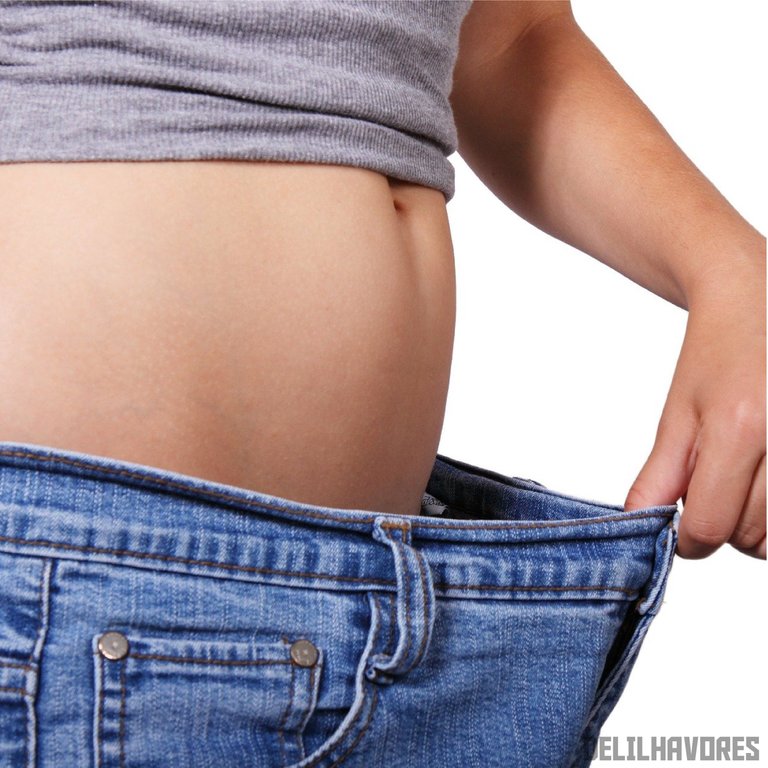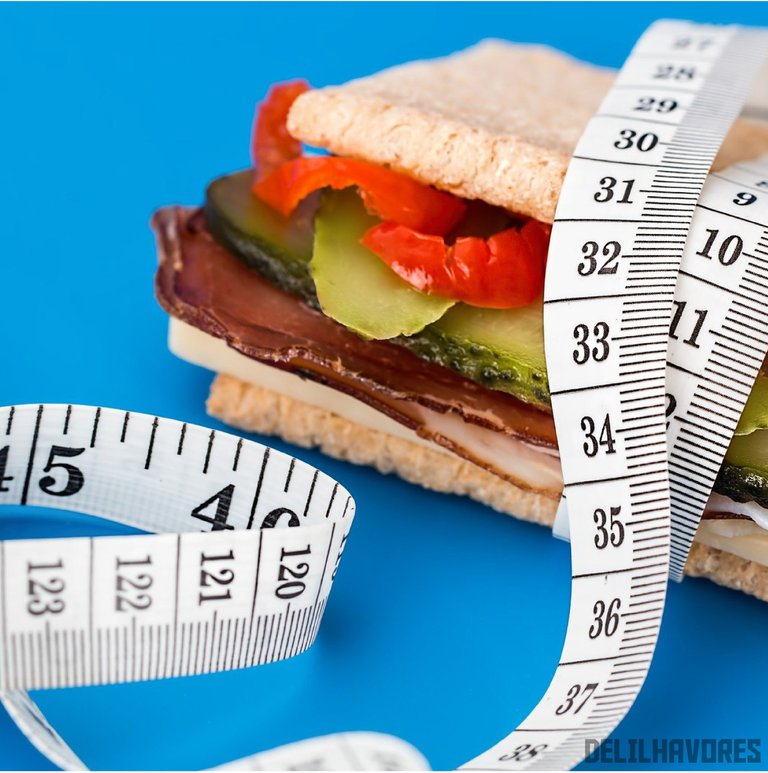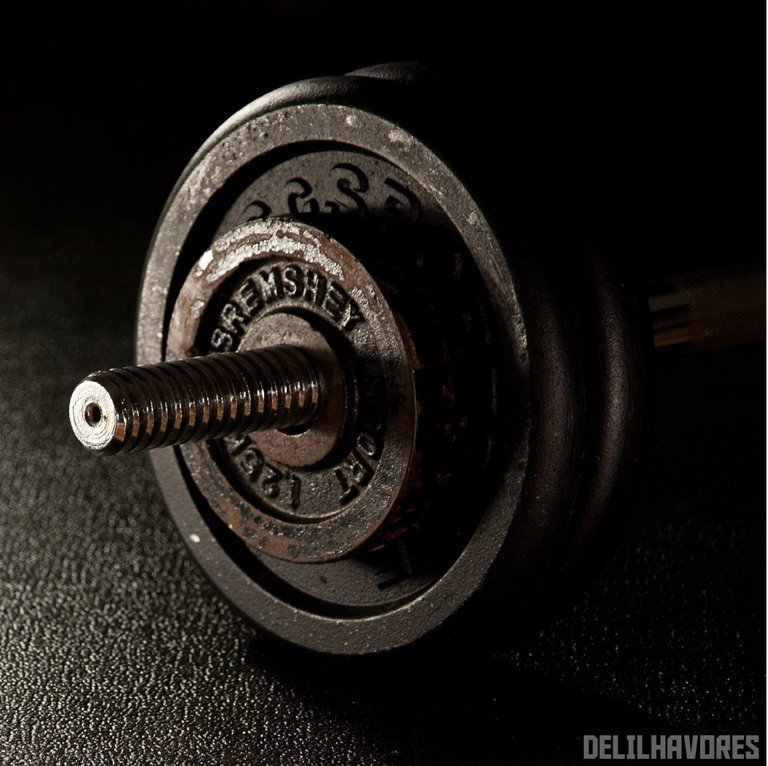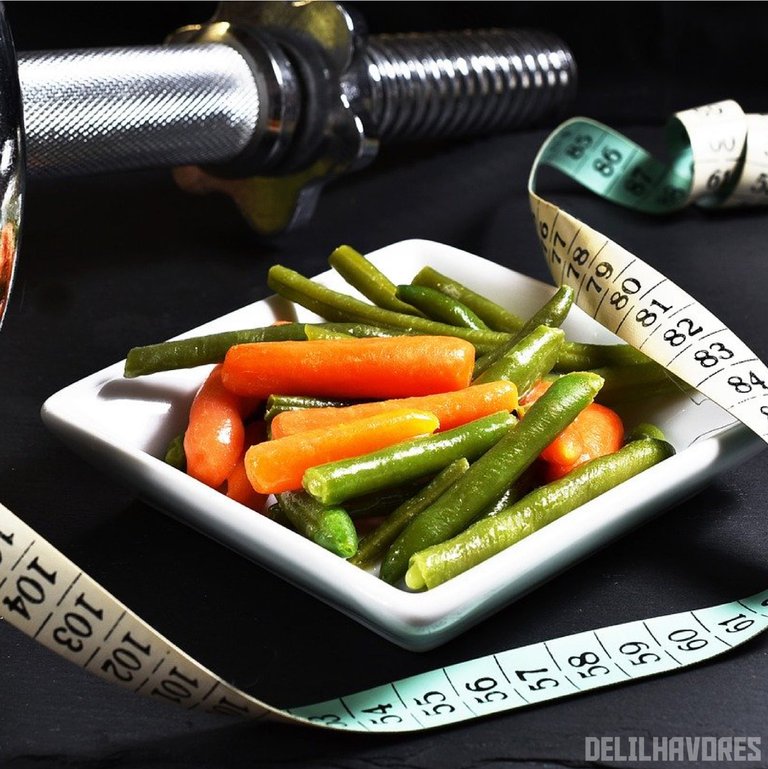Should I lose weight? - Dovrei dimagrire?
Hi everybody,
Every day, simply by turning on the TV or reading the newspaper, I hear of words like "body weight", "constitution", "weight loss", "diet".
In short, it seems that weight is an obsession for our society and with this post I would like to try to illustrate some simple parameters to understand its importance.
Predisposition
It is necessary to start from a fundamental concept: Body weight is influenced by many factors, including genetic, environmental and psychological ones.
Genetic factors are not modifiable and have their own importance in establishing a person's weight, the distribution of adipose tissue and body shapes.
Nonetheless, this statement could lead to the risk of experiencing the condition of being overweight as independent of one's will. It is a very serious problem because many people, in doing so, are induced to seek the solution to the problem outside themselves, for example through drugs (herbal teas, bars, ...), surgery, slimming clothing, …
In reality, however, having a genetic predisposition does not mean being destined to be overweight or obese. Rather, it is important to understand what your limit weight range is and to adopt a lifestyle that is as much as possible capable of supporting it, without excessively or excessively depriving yourself.
Anthropometric variables
Body weight is a balance between income and expenditure and can change very quickly in case of excessive or faulty energy intake compared to real needs:
- We gain weight when the energy procured from food is not totally spent and accumulates in the form of fat;
- We lose weight if our diet is insufficient to cover the energy needs necessary to fulfill the physical commitment;
- The weight remains constant when the balance is correct.
In nutrition studies, the reference individual is believed to be an adult caucasian male of 70 kg and 1.70 m in height. This concept shows many limitations and must be considered with elasticity in the estimation of energy needs!
For adult Italians, the average anthropometric values do not differ significantly from the European average and we have that:
- For a height of about 173 cm in men between 35 and 33 years, 172 cm between 45 and 54 years and 170 cm between 55 and 64 years, the observed weight is 76.9, 77.1 and 76.6 kg respectively;
- In women the average height is 160 cm between 35 and 44 years, 159 cm between 45 and 54 years and 158.6 between 55 and 64 years, with an observed weight of 60.3, 62.7 and 63.8 kg respectively.
Body weight is not the only anthropometric variable, but it is the one that changes earlier, indicating long, medium and short term food imbalances.
Penta-compartmental model
According to the penta-compartmental model, the total weight is given by the sum of:
- Lean body mass;
- Fat mass;
- Total body water;
- Protein mass;
- Mineral mass;
- Glycogen.
The adipose tissue is in the body compartment in which the accumulated fat is deposited as an energy reserve in the body. It is the lightest compartment and the body weight fluctuations are mainly due to changes in adipose tissue!
We can find different methods of measurement of adipose tissue, including for example plicometry, which measures the thickness of the subcutaneous adipose panniculus in different points: subscapular, triceps, abdominal, ...
Assessment of the body constitution
"Constitution" means the set of morphological-somatic and functional characteristics belonging to each individual, which are influenced by genetic, environmental and nutritional factors:
- Normoline subjects are characterized by a balance between horizontal and vertical measures;
- In shortline subjects, horizontal structures prevail over vertical ones, thus giving the image of a massive and stocky build regardless of height;
- Longline subjects have the prevalence of vertical measures over horizontal ones giving the appearance of a slender build even in individuals of short stature.
Nowadays, a simple distinction of the constitution based on the skeletal structure uses, as a reference index, the circumference of the wrist, measured on both wrists at the height of the fold between the hand and the styloid process of radio and ulna.
In particular, the Grant formula is applied:
r = h in cm / wrist circumference in cm
Morphological type Man Woman
Longline r> 10.4 r> 11
Normoline r = 9.6-10.4 r = 10.1-11
Shortline r <9.6 r <10.1
In addition to the constitutions thus classified, it is possible to find individuals with mixed physical constitutions.
This information is used in the Monnerot-Dumaine formula:
ideal weight = (h in cm - 100) + (wrist circumference x 4) / 2
The value obtained refers to the normotype, in the long-line constitution remove 5% and in the short-line add 5%.
Body Mass Index
It is a parameter calculated by:
BMI = weight in kg / (stature in m) ^ 2
And that allows to classify individuals in underweight (<18.5), normal weight (18.5-24.9) or overweight (> 25.0). The last category can then be further divided into pre-obese, class I, class II and class III obese.
The BMI, however, does not take body composition into account and therefore can, consequently, have important limits. For example, it may overestimate the overweight in an athletic subject or underestimate the weight in the elderly.
Furthermore, for children and adolescents, it is preferable to use the percentile tables, which are established in reference to the BMI of other children and adolescents of the same age.
Waist circumference
To measure the degree of overweight, the measurement of the waist circumference is also used, an index of the visceral fat mass.
The waist circumference should be measured just above the navel and is considered desirable if it is less than 94 cm in men and 80 cm in women.
An accumulation of fat around the waist is particularly harmful, especially for cardiovascular diseases.
Weight control
In Italy, just under half of adults over 30 are overweight, and one fifth of them are decidedly obese. The trend in this direction is already looming among children and adolescents.
Excess weight in its various degrees (overweight, medium obesity, severe obesity) is mostly the result of unbalanced eating habits from an energy point of view: too many calories introduced compared to those necessary.
It is important, however, to keep or to bring back the weight within the limits because this allows to prevent the appearance of diseases with a wider diffusion, such as diabetes, hypertension, coronary heart disease, which constitute, between 30 and 60 years, the risks most associated with obesity.
ITA
Ciao a tutti,
Ogni giorno, semplicemente accendendo la TV o leggendo il giornale, si sente parlare di “peso corporeo”, “costituzione”, “dimagrimento”, “dieta”.
Insomma, sembra proprio che per la nostra società il peso sia un’ossessione e con questo post vorrei provare a illustrare alcuni semplici parametri per capirne l’importanza.
Predisposizione
È necessario partire da un concetto fondamentale: Il peso corporeo è influenzato da moltissimi fattori, tra cui quelli genetici, ambientali e psicologici.
I fattori genetici non sono modificabili e hanno una loro importanza nello stabilire il peso di una persona, la distribuzione del tessuto adiposo e le forme corporee.
Ciò nonostante, questa affermazione potrebbe portare al rischio di vivere la condizione di sovrappeso come indipendente dalla propria volontà. È un problema molto grave perché molte persone, così facendo, sono indotte a ricercare la soluzione al problema al di fuori di sé stessi, ad esempio attraverso farmaci (pozioni, tisane, barrette, …), interventi chirurgici, indumenti dimagranti, …
In realtà, però, avere una predisposizione genetica non significa essere destinati al sovrappeso e all’obesità. Piuttosto, è importante capire quale sia il proprio intervallo di peso limite e adottare uno stile di vita il più possibile in grado di sostenerlo, senza eccedere né privarsi eccessivamente.
Variabili antropometriche
Il peso corporeo è un bilancio tra entrate e uscite e può modificarsi molto velocemente in caso di eccessiva o difettosa assunzione di energia rispetto ai reali bisogni:
- Ingrassiamo quando l’energia procurata dagli alimenti non viene totalmente spesa e si accumula sotto forma di grasso;
- Dimagriamo se la nostra alimentazione è insufficiente a coprire il fabbisogno energetico necessario per assolvere l’impegno fisico;
- Il peso rimane costante quando il bilancio è in pareggio.
Negli studi di nutrizione, l’individuo di riferimento si ritiene essere un adulto maschio caucasico di 70 kg e 1.70 m di altezza. Questo concetto mostra molte limitazioni e deve essere considerato con elasticità nella stima dei fabbisogni di energia!
Per quanto riguarda gli italiani adulti, i valori antropometrici medi non si discostano significativamente dalla media europea e abbiamo che:
- Per una statura di circa 173 cm negli uomini tra 35 e 33 anni, 172 cm tra 45 e 54 anni e 170 cm tra 55 e 64 anni, il peso osservato è rispettivamente di 76,9, 77,1 e 76,6 kg;
- Nelle donne la statura media risulta essere 160 cm tra 35 e 44 anni, 159 cm tra 45 e 54 anni e 158,6 tra 55 e 64 anni, con un peso osservato di rispettivamente 60,3, 62,7 e 63,8 kg.
Il peso corporeo non è l’unica variabile antropometrica, ma è quella che si modifica più precocemente, indicando squilibri alimentari di lungo, medio e breve termine.
Modello penta-compartimentale
Secondo il modello penta-compartimentale, il peso totale è dato dalla somma di:
- Massa magra;
- Massa grassa;
- Acqua corporea totale;
- Massa proteica;
- Massa minerale;
- Glicogeno.
Il tessuto adiposo è in compartimento corporeo in cui si deposita il grasso accumulato sotto forma di riserva energetica nell’organismo. Si tratta del compartimento più leggero e le oscillazioni di peso corporeo sono principalmente dovute a variazioni di tessuto adiposo!
Possiamo trovare diversi metodi di misura del tessuto adiposo, tra cui per esempio la plicometria, la quale misura lo spessore del pannicolo adiposo sottocutaneo in diversi punti: sottoscapolare, tricipitale, addominale, ...
Valutazione della costituzione corporea
Per “costituzione” si intende l’insieme delle caratteristiche morfologico-somatiche e funzionali appartenenti a ciascun individuo, che vengono influenzate da fattori genetici, ambientali, nutrizionali:
- Soggetti normolinei sono caratterizzati da un equilibrio tra misure orizzontali e verticali;
- Nei soggetti brevilinei prevalgono le strutture orizzontali rispetto alle verticali, dando così l’immagine di una corporatura massiccia e tarchiata indipendentemente dalla statura;
- Soggetti longilinei hanno la prevalenza delle misure verticali su quelle orizzontali dando l’apparenza di corporatura slanciata anche in individui a bassa statura.
Al giorno d’oggi, una semplice distinzione della costituzione in base alla struttura scheletrica utilizza, come indice di riferimento, la circonferenza del polso, misurata su entrambi i polsi all’altezza della piega tra mano e processo stiloideo di radio e ulna.
In modo particolare, si applica la formula di Grant:
r = h in cm/circonferenza del polso in cm
Tipo morfologico Uomo Donna
Longilineo r>10.4 r>11
Normolineo r=9.6-10.4 r=10.1-11
Brevilineo r<9.6 r<10.1
Oltre alle costituzioni così classificate, è possibile riscontrare individui con costituzioni fisiche miste.
Queste informazioni vengono utilizzate nella formula di Monnerot-Dumaine:
peso ideale = (h in cm – 100) + (circ. polso x 4) / 2
Il valore ottenuto si riferisce al normotipo, nella costituzione longilinea togliere il 5% e nella brevilinea aggiungere 5%.
Indice di Massa Corporea
Si tratta di un parametro calcolato da:
IMC = peso in kg / (statura in m)^2
E che consente di classificare gli individui in sottopeso (<18,5), normopeso (18,5-24,9) o sovrappeso (> 25,0). L’ultima categoria può poi essere ulteriormente suddivisa in pre-obeso, obeso di classe I, di classe II e di classe III.
L’indice di massa corporea, però, non tiene conto della composizione corporea e quindi può, di conseguenza, presentare dei limiti importanti. Ad esempio, potrebbe sovrastimare il sovrappeso in un soggetto atletico o sottostimare il peso in soggetti anziani.
Inoltre, per bambini e adolescenti, è preferibile utilizzare le tabelle dei percentili, le quali sono stabilite in riferimento all’IMC di altri bambini e adolescenti della stessa età.
Circonferenza vita
Per stimare il grado di sovrappeso è utilizzata anche la misura della circonferenza della vita, un indice della massa grassa viscerale.
La circonferenza vita deve essere misurata appena sopra l’ombelico e viene considerata desiderabile se è inferiore a 94 cm negli uomini e 80 cm nelle donne.
Un accumulo di grasso intorno alla vita è particolarmente dannoso, soprattutto per le malattie cardiovascolari.
Controllo del peso
In Italia poco meno della metà degli adulti oltre i 30 anni è in sovrappeso, e di questi un quinto è decisamente obeso. La tendenza in questa direzione si profila già tra i bambini e gli adolescenti.
L'eccesso di peso nei sui vari gradi (sovrappeso, obesità media, obesità grave) è per lo più il risultato di abitudini alimentari squilibrate dal punto di vista energetico: troppe calorie introdotte rispetto a quelle necessarie.
È importante, però, mantenere o far rientrare il peso nei limiti perché ciò consente di prevenire la comparsa di malattie a più larga diffusione, come diabete, ipertensione, cardiopatia coronarica, che costituiscono, tra i 30 e i 60 anni, i rischi maggiormente associati all'obesità.
Sources – Fonti: "Ministero della Salute" ; “Le Scienze” ; “The China Study” – Campbell.






Join the community in our migration to Hive, a community built blockchain for the community. All Steem account holders will receive equivalent stake on the new Hive blockchain.
Please see this post on SteemPeak for more information.
This post was selected, voted and shared by the discovery-it curation team in collaboration with the C-Squared Curation Collective. You can use the #Discovery-it tag to make your posts easy to find in the eyes of the curator. We also encourage you to vote @c-squared as a witness to support this project.
Manually curated by the Qurator Team in partnership with @discovery-blog.
Keep up the good work!